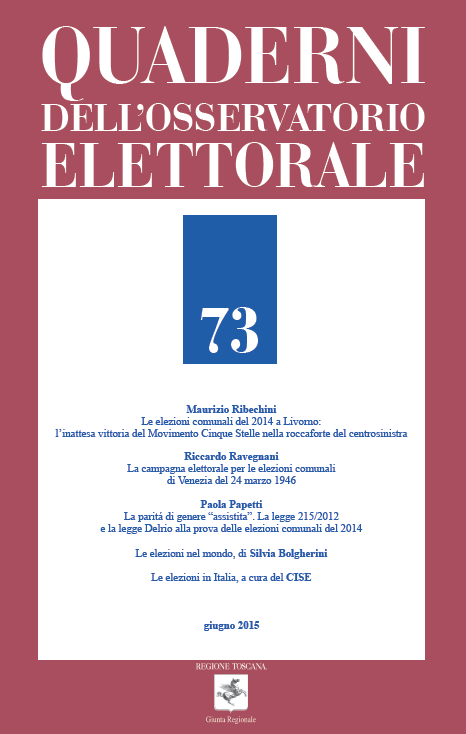La parità di genere "assistita". La legge 215/2012 e la legge Delrio alla prova delle elezioni comunali del 2014
Published 2015-06-30
How to Cite
Abstract
Over the past few years, a conspicuous number of countries has begun coping with the issue of gender inequality trying to delineate possible solutions. Concerns have been raised by the scarce share – and in many case lack – of women active in the legislative assemblies at different levels of government and in the decisional contexts where the fundamental and the most influential decisions spilling over the different life areas of a country are normally taken. Italy has been characterized by an underlining situation of backwardness in the last years, keeping still while the rest of the world was issuing laws to sustain a gender balance in the political scene. The approval of the 2015/2012 law was the turning point. This law transferred on the municipal level some of the mechanisms protecting the gender balance already in place at the regional level, in particular the double gender preference and the minimum gender threshold needed to form the electoral rolls. Starting with the adoption of this law, the Italian legislator showed the will of introducing at all governing levels instruments aimed at guaranteeing fair and equal opportunities of accessing the local political institutions for both men and women. This paper aims at demonstrating the positive impact unfolded by the 215/2012 law and the first article, paragraph 137 of the so-called Delrio's law on the equilibrium of gender of candidates, elected and appointed people during the municipal elections of May 2014. The research upon which the article is based has been conducted on a sample of 25 cities analysing and comparing the electoral results of the 2014 with the results of the previous elections (when no instruments of gender quality were applied).

